The Financial Times
Product Design, Research & Insights
The Financial Times is an English-language international daily newspaper headquartered in London with special emphasis on business and economic news.
The FT hired Dominic to support the Conversion team with the redesigning of the barrier/paywall pages to convert new users to an FT subscription. In addition to supporting other work-streams.
The Conversion teams’ focus was to ensure the execution of well performing barrier pages to convert prospects into paid subscribers. They would also own and carry out tests for new components, ideas and promotions to encourage customers to subscribe with the FT.
Users visiting the FT.com would interact with the Barrier pages at several touch-points, depending on their use case. The Conversion team’s prime focus would be to deliver the many variations of barrier pages - both B2C and B2B. Each page would surface a unique and specific message to meet the stakeholder requirements or reflect the use case.
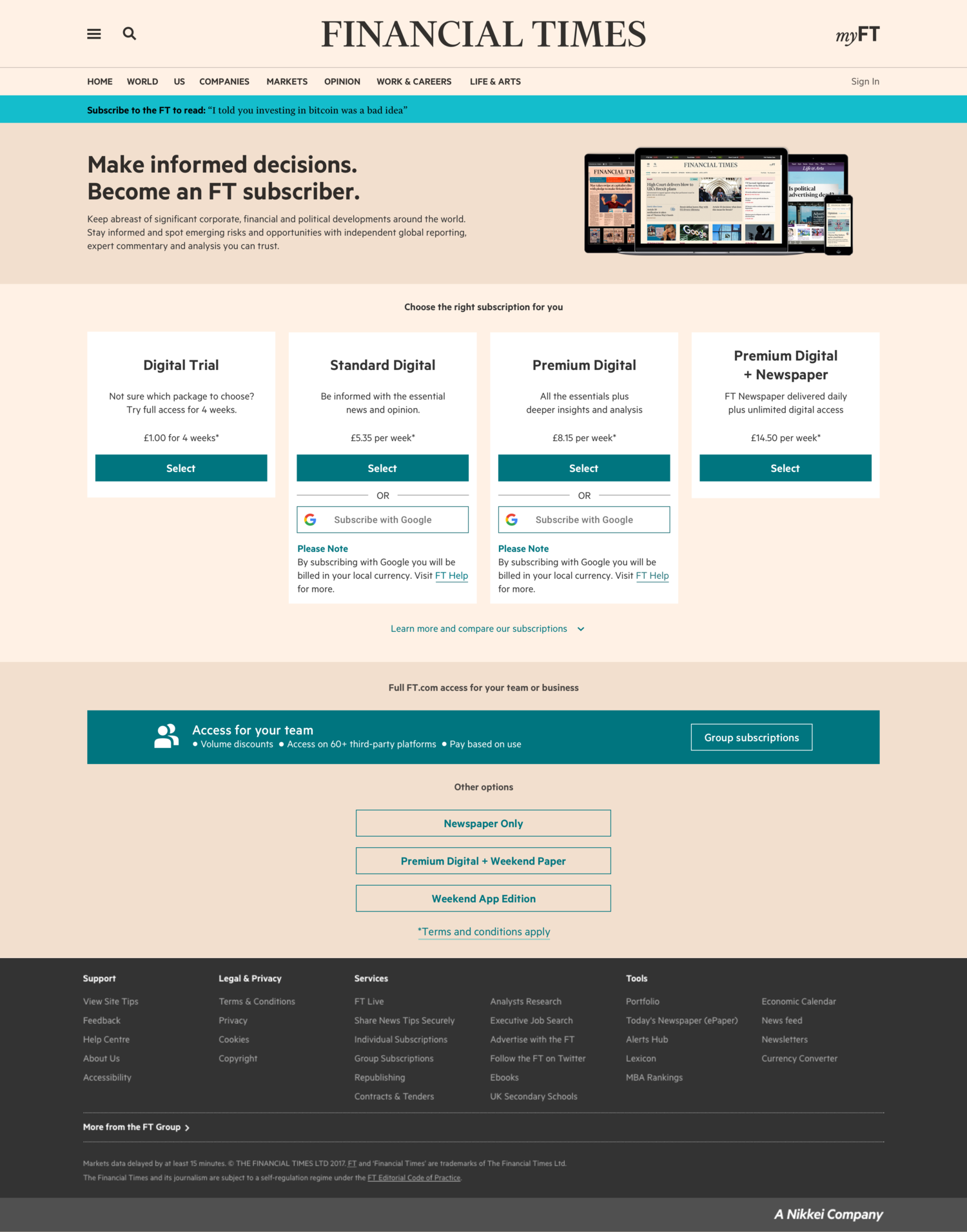
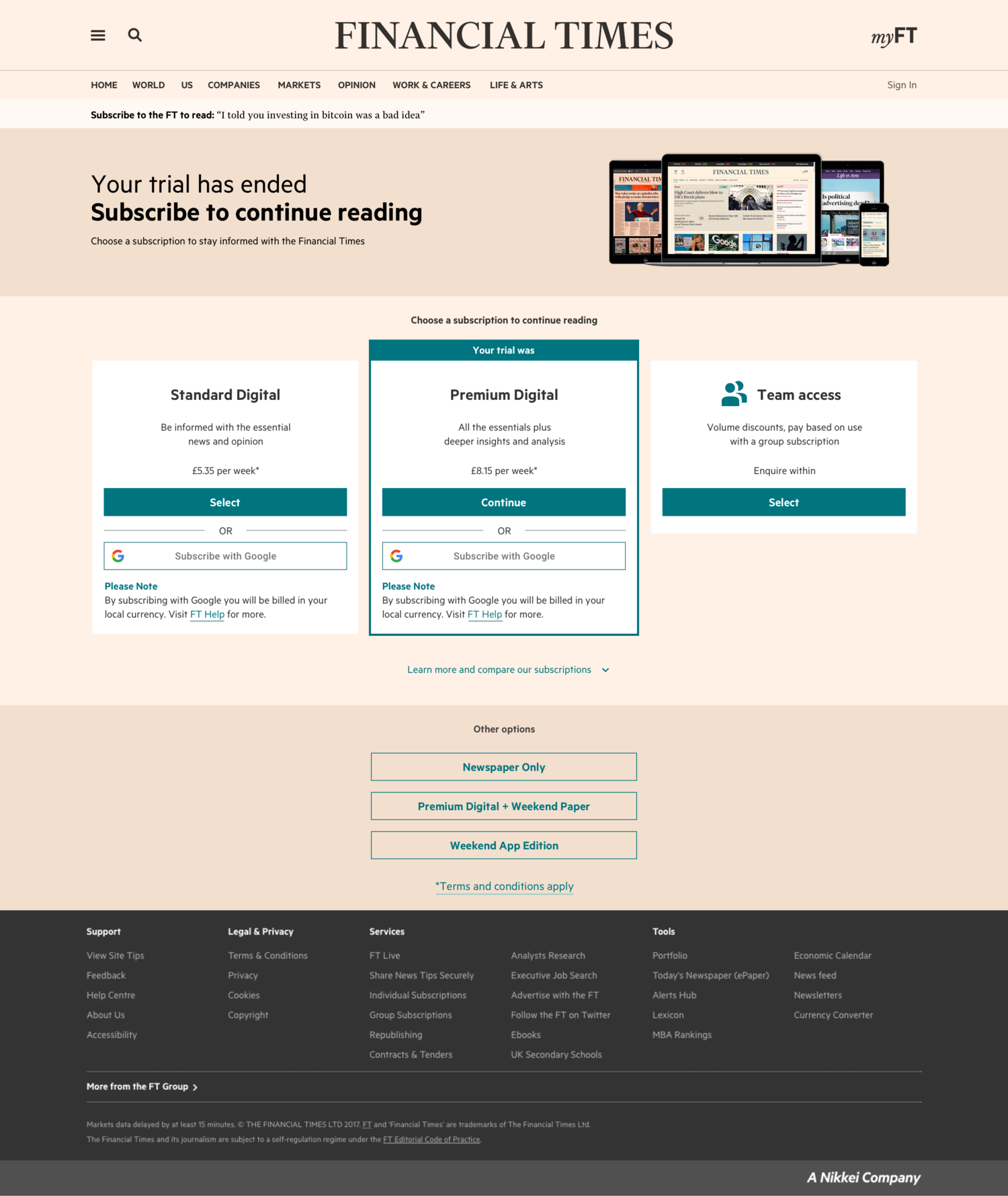
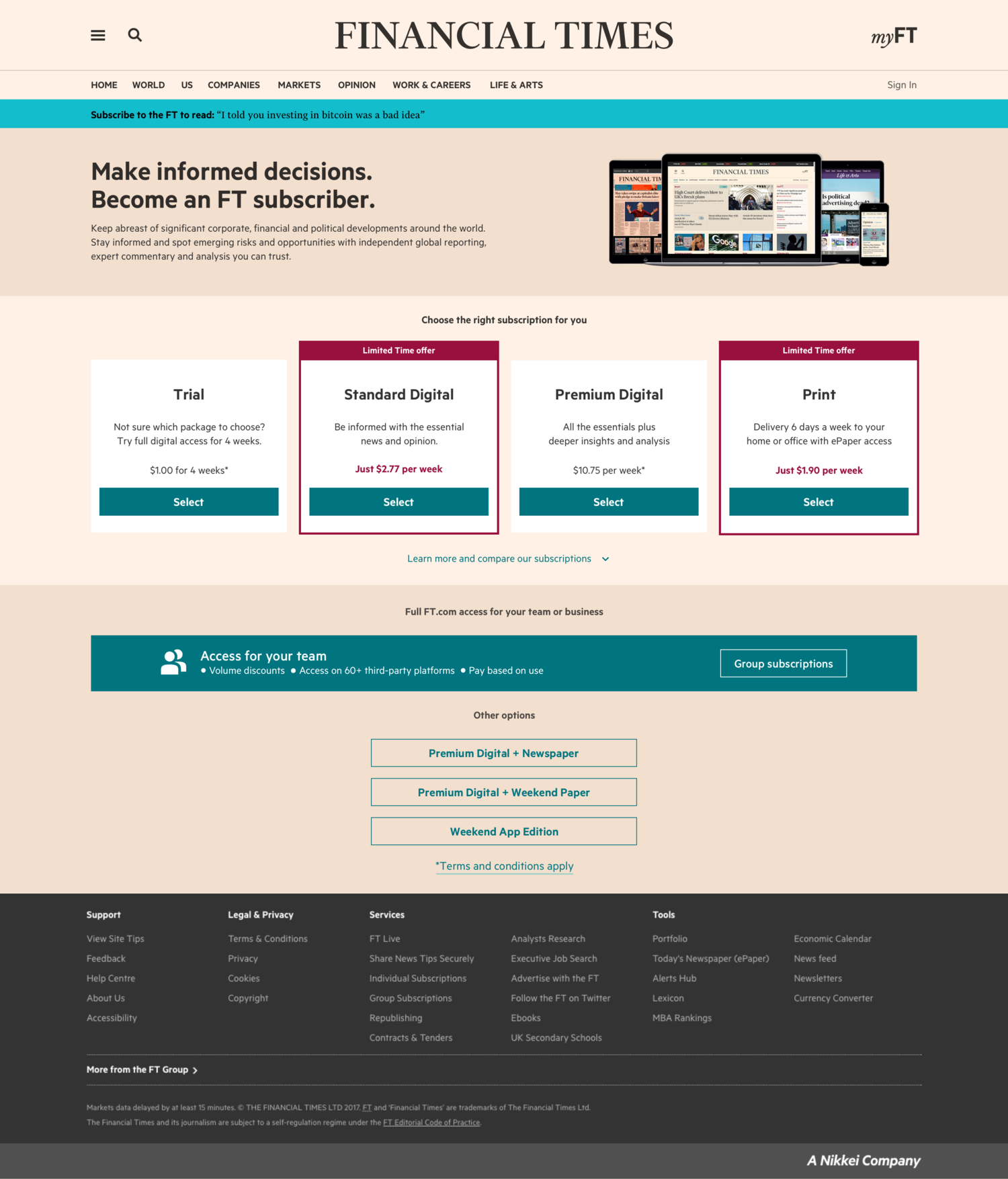
Reducing the Noise
Whilst Dominic was working on the various other barrier pages, he begun to realise a few crucial aspects that were distracting customers from making a decision. He begun to explore ways to improve the communications and visual engagement of the page with customers by reducing the complexities and enhancing the details.
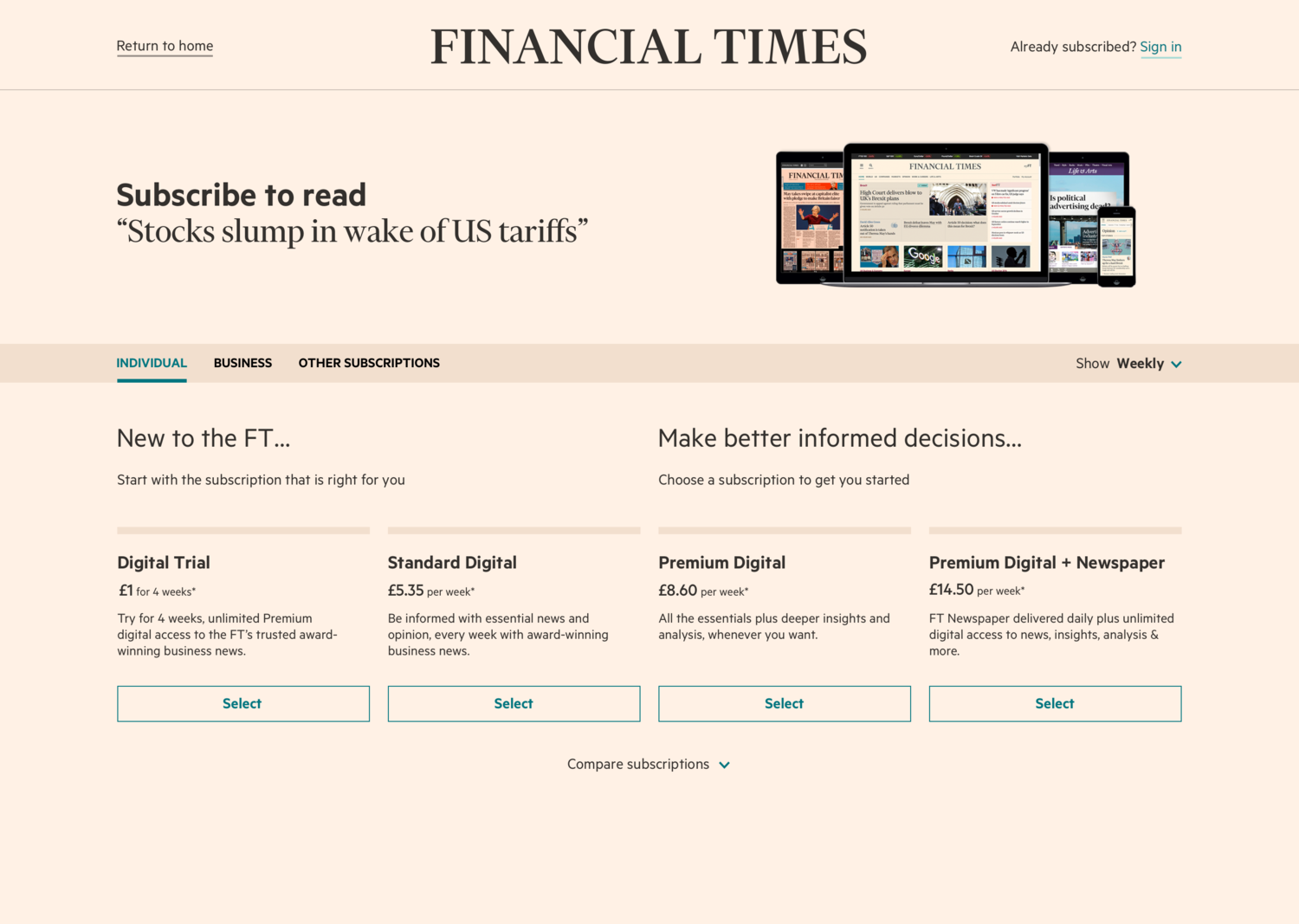
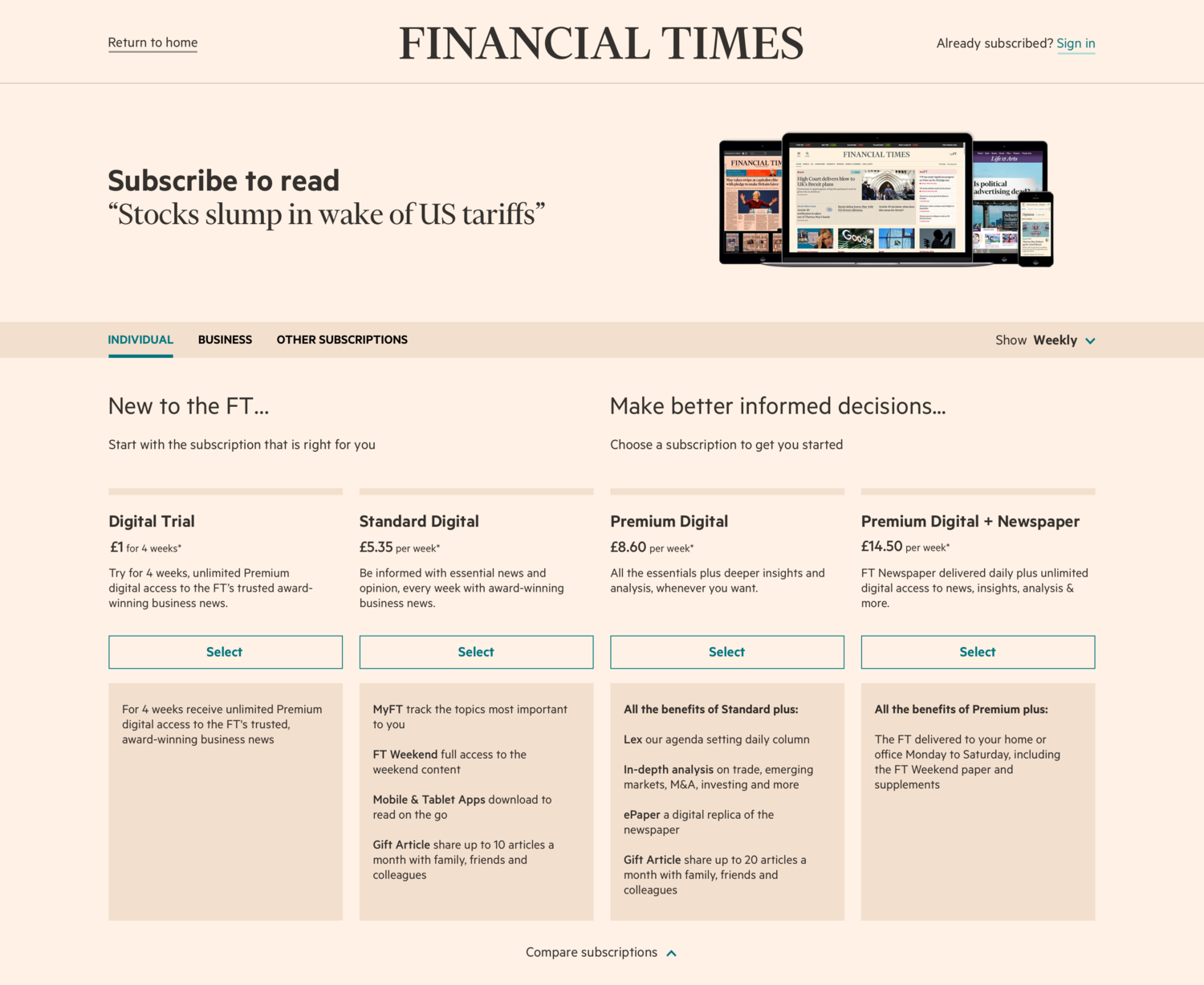
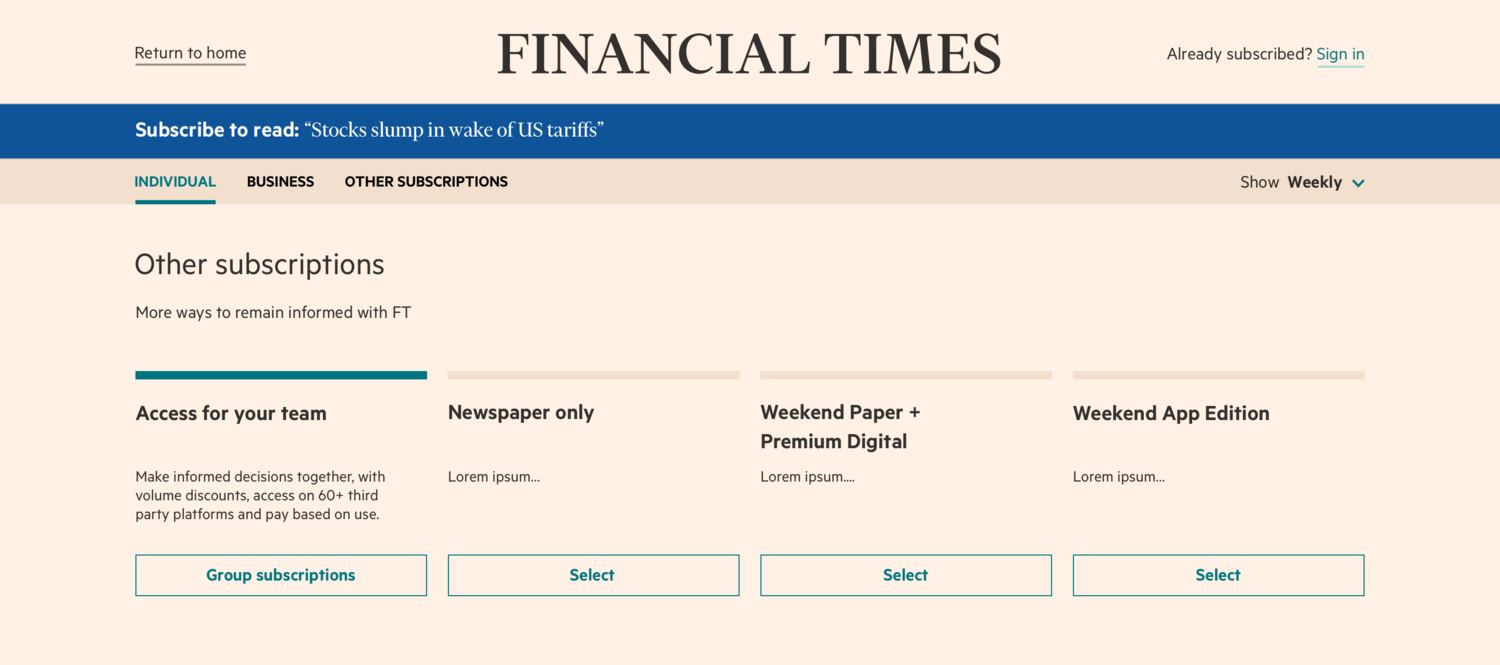
Dominic also explored a design approach, that could resonate with customers better. Based on their interaction with other digital subscription services, such as Netflix, Spotify, Apple Music and more. He adopted the comparison view to see how it could enhance the benefits of each tariff option.

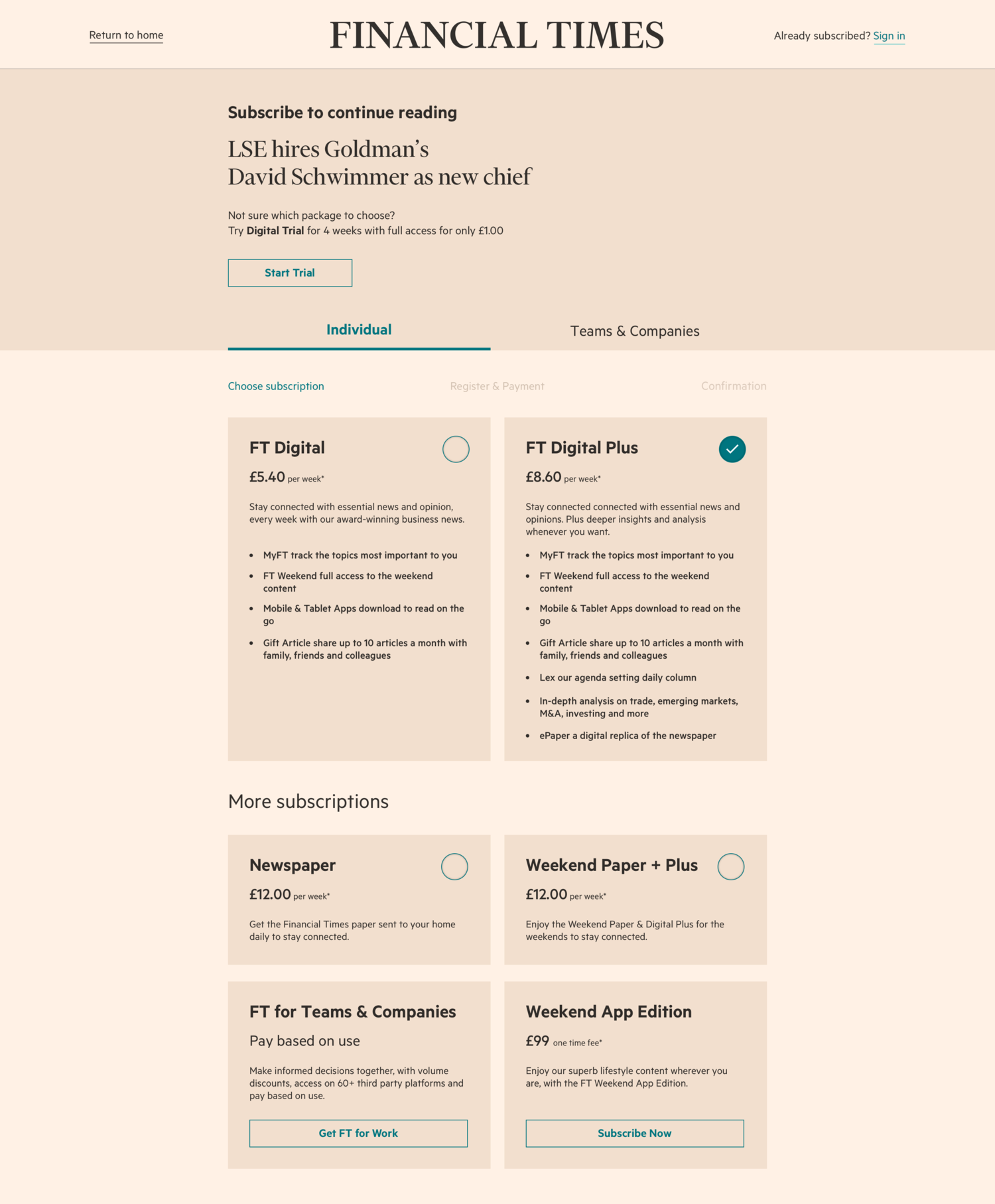

Service Email Blueprint
Whilst Dominic was working across various work-streams, he begun to discover the lack of cohesion and design consideration for the service email blueprint/communications at the FT. Not only on a interface view but also top level view of the entire experience.



Email Audit
Extending on from Dominic’s previous discovery. He conducted an email audit of the entire spectrum of emails sent internally and externally across the FT. He wanted to understand how the business could reduce the quantity of emails but maintain the impact of service emails. He conducted this email audit weeks before the arrival of GDPR legislation.

